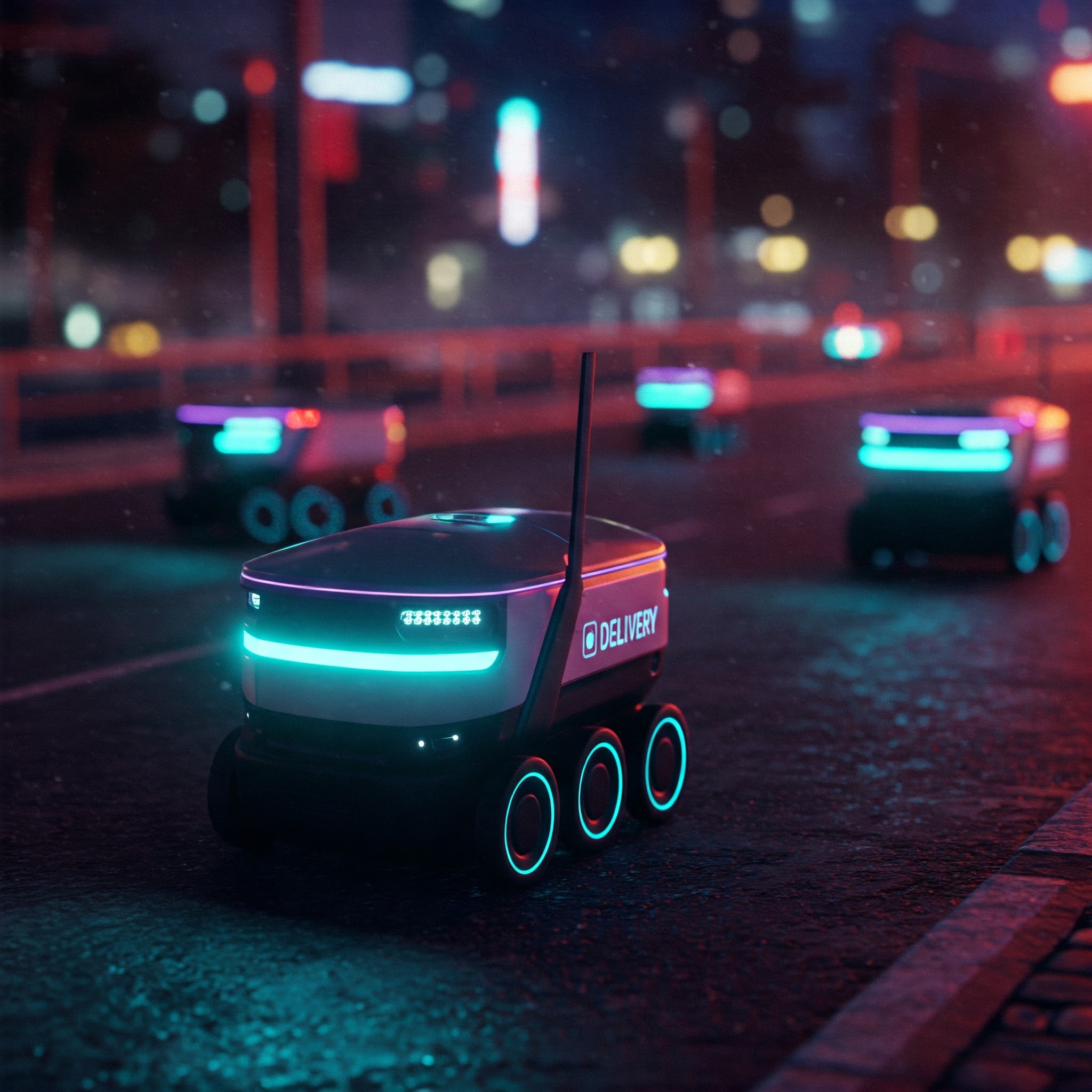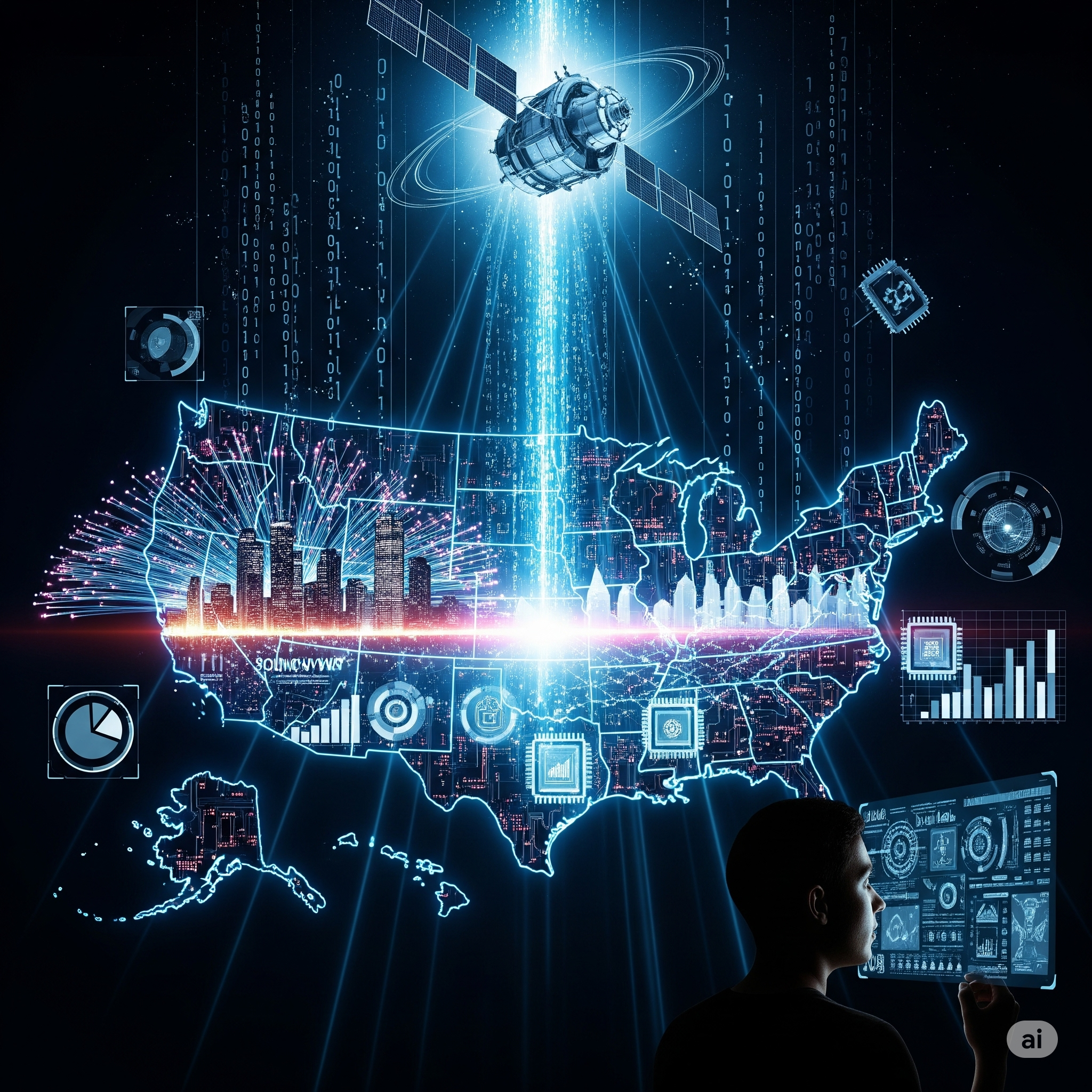Introduction
In the era of rapid technological advancement, the way goods are transported and delivered is undergoing a significant transformation. One of the most promising innovations in the logistics and transportation sector is the Autonomous Delivery Bot. These intelligent, self-driving robots are designed to perform the crucial task of last-mile delivery—the final leg of the delivery process from a transportation hub to the customer’s doorstep.
With growing demand in e-commerce, food delivery, healthcare logistics, and urban freight, autonomous bots offer a contactless, efficient, and cost-effective solution. Powered by a mix of artificial intelligence (AI), machine learning (ML), sensors, and GPS navigation, these bots are revolutionizing how businesses operate and how consumers receive goods.
1. What Are Autonomous Delivery Bots?
Autonomous Delivery Bots (ADBs) are self-navigating robotic vehicles designed to deliver goods without human intervention. Typically operating at low speeds on sidewalks, streets, or private premises, these bots are equipped with advanced navigation systems that allow them to detect obstacles, follow traffic rules, and reach destinations safely.
Core Components:
- AI-based Navigation System
- Lidar, Radar, and Ultrasonic Sensors
- Cameras and Computer Vision
- Global Positioning System (GPS)
- Wireless Connectivity (Wi-Fi, 4G/5G)
- Lockable Compartments for Goods
- Obstacle Detection and Avoidance System
Depending on their use-case, delivery bots may be small wheeled ground units, aerial drones, or indoor mobile robots operating in hospitals and malls.
2. How Do They Work?
Autonomous delivery bots follow a three-step workflow: navigation, item storage/delivery, and communication.
Step 1: Route Planning and Navigation
- Bots use GPS and pre-programmed maps to plan a route.
- AI and machine learning help recognize real-time obstacles and adjust the path.
- Sensors such as LIDAR (Light Detection and Ranging) help build a 3D map of surroundings.
Step 2: Secure Transport
- Goods are placed in a lockable compartment, often temperature-controlled.
- The bot only unlocks when it reaches the correct recipient, verified via QR code, OTP, or facial recognition.
Step 3: Communication
- The bot communicates via mobile app, notifying the recipient of delivery.
- It can handle two-way voice interactions in some advanced models.
3. Types of Autonomous Delivery Bots
a) Ground-based Delivery Bots
- Small, wheeled robots ideal for urban sidewalks and gated communities.
- Example: Starship Technologies bots for food and parcel delivery.
b) Indoor Bots
- Used in hospitals, offices, and hotels for internal logistics.
- Example: Aethon TUG robots transporting medical supplies.
c) Aerial Delivery Drones
- Operate in open air; faster but require airspace clearance.
- Example: Zipline and Amazon Prime Air for rural medicine delivery.
d) Autonomous Vehicles for Delivery
- Larger autonomous vans or carts for transporting multiple packages.
- Example: Nuro autonomous delivery vehicles.
4. Advantages of Autonomous Delivery Bots
a) Cost-Efficiency
- Reduce the need for human delivery personnel.
- Lower fuel and maintenance costs due to electric operation.
b) Contactless Delivery
- Critical during pandemics and public health emergencies.
- Ideal for healthcare and food delivery without human contact.
c) 24/7 Operation
- Bots can function around the clock without fatigue.
- Useful for urgent nighttime or emergency deliveries.
d) Environmentally Friendly
- Most bots are powered by electric batteries, reducing carbon emissions.
e) Scalability and Flexibility
- Can be rapidly deployed in urban areas, campuses, or gated societies.
- Modular designs enable customization for different industries.
5. Challenges and Limitations
a) Infrastructure Readiness
- Uneven sidewalks, potholes, and lack of dedicated lanes can hinder performance.
- Rural and semi-urban areas are often not bot-friendly.
b) Regulatory Framework
- Clear policies are needed regarding bot operation zones, liability in accidents, and privacy.
- In many countries, legal frameworks are still under development.
c) Security and Vandalism
- Risk of bots being tampered with, stolen, or damaged.
- Secure locking mechanisms and camera surveillance are necessary.
d) Limited Payload and Range
- Current bots can only carry lightweight items (5–20 kg).
- Battery range limits their operation to a few kilometers.
e) Weather Dependence
- Performance can be affected by rain, snow, or extreme heat.
6. Key Use Cases and Applications
a) E-commerce and Retail
- Rapid delivery of parcels from warehouses to homes.
- Real-time tracking through mobile apps.
b) Food and Grocery Delivery
- Autonomous bots are ideal for delivering groceries, meals, and beverages in city areas.
c) Healthcare Logistics
- Hospitals use bots for delivery of medicines, documents, blood samples, and equipment within campuses.
d) Educational and Corporate Campuses
- Universities and large office complexes deploy bots for intra-campus deliveries.
e) Emergency and Disaster Relief
- Bots can deliver essential supplies during natural disasters, lockdowns, or in conflict zones.
7. Leading Companies and Innovations
a) Starship Technologies (Estonia/USA)
- Ground robots deployed in universities and urban centers.
- Over 5 million autonomous deliveries completed.
b) Nuro (USA)
- Self-driving delivery vehicles approved for road use in California.
- Partnerships with Walmart, Domino’s, and CVS.
c) Amazon Scout
- A six-wheeled robot designed for same-day delivery.
- Operated in suburban neighborhoods in the US.
d) Kiwibot
- Affordable food delivery bots active in South America and US campuses.
- Uses a mix of human teleoperation and AI.
e) Zhen Robotics (China)
- Known for bots in apartment complexes and smart cities.
- Uses facial recognition and auto-parking technologies.
8. India and Autonomous Delivery Bots: Potential and Challenges
a) Growing Opportunity
With a booming e-commerce market, growing urbanization, and traffic congestion, India offers fertile ground for ADB deployment.
b) Use Cases in India
- Last-mile delivery in gated societies, tech parks, and hospitals
- Internal logistics in smart city projects
- Pandemic management through contactless medicine and food delivery
c) Government Support
- Drone Shakti Scheme and National Logistics Policy can be expanded to include ground bots.
- Support through Startup India, Digital India, and Make in India for local manufacturing.
d) Key Challenges
- Regulatory hurdles and lack of clarity on bot movement rights
- Street infrastructure issues
- Limited public awareness and acceptance
- Risk of theft or damage in dense urban settings
9. Ethical and Social Considerations
a) Job Displacement
- May reduce demand for delivery workers and gig economy jobs.
- Need for reskilling programs and new job roles in robot management.
b) Data Privacy
- Bots collect location and user data for deliveries.
- Regulations needed for data protection and ethical AI.
c) Accessibility
- Bots must be inclusive—design should not block sidewalks or access points for differently-abled individuals.
d) AI Accountability
- Who is liable in case of malfunction, damage, or incorrect delivery?
- Transparent algorithmic decision-making is essential.
10. The Future of Autonomous Delivery Bots
a) Integration with Smart Cities
- Bots could become part of a city’s IoT ecosystem, connected with traffic lights, public transport, and warehouses.
b) Swarm Delivery Systems
- Coordinated fleets of bots functioning simultaneously for faster, distributed deliveries.
c) Enhanced Autonomy
- Improvements in AI will lead to bots capable of self-learning, real-time decision-making, and complex route planning.
d) Cross-Sector Applications
- Use in agriculture (input delivery), education (document transport), and defense (supplies in combat zones).
e) Hybrid Models
- Combination of drones + ground bots for vertical and horizontal delivery in dense urban environments.
Conclusion
Autonomous delivery bots represent the future of efficient, smart, and sustainable last-mile logistics. As cities grow, so does the demand for faster and more cost-effective delivery solutions. With advancements in AI, robotics, and battery technology, ADBs are likely to become a common sight in urban landscapes worldwide.
However, to ensure their successful adoption, governments, businesses, and technologists must work together to create a regulatory framework, invest in infrastructure development, and address social and ethical implications. In a country like India, where delivery demand is booming and innovation is thriving, ADBs could be a game-changer—paving the way for a contactless, cleaner, and more efficient logistics ecosystem.




